#Kalloch
Text

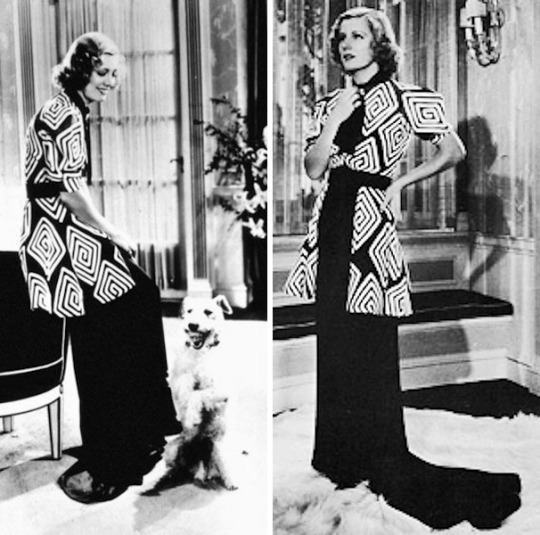
One Dress a Day Challenge
February: Coeli's Monochrome Picks
The Awful Truth / Irene Dunne as Lucy Warriner
One of the things I love about black and white movies is these bold designs on clothing. It feels like you don't see that so often in color movies, or maybe it just pops more in B&W because of the high contrast. The shape of this dress is also unique, as is the scarf/cravat effect in front. You might say this is the "quirky 1930s," as opposed to the sleek "classic 1930s" look from yesterday.
Costumes for this movie were designed by (Robert) Kalloch.
#the awful truth#coeli's picks#irene dunne#one dress a day challenge#one dress a week challenge#movie costumes#1937 movies#1937 films#1930s fashion#1930s style#30s fashion#30s style#black and white movies#kalloch#robert kalloch#black and white films#classic hollywood#classic films#old hollywood
103 notes
·
View notes
Text
19 ottobre … ricordiamo …
19 ottobre … ricordiamo …
#semprevivineiricordi #nomidaricordare #personaggiimportanti #perfettamentechic
2020: Gianni Dei, talvolta accreditato come Gianni Dei Carpanelli, Nino Dei e John Day, attore e cantante italiano noto per la sua attività di caratterista. (n. 1940)
2018: Wanda Miletti Ferragamo, meglio nota come Wanda Ferragamo, è stata un’imprenditrice italiana. (n. 1921)
2013: Noel Harrison, sciatore alpino, attore e cantante britannico. (n. 1934)
2010: Tom Bosley, Thomas Edward Bosley,…

View On WordPress
#19 ottobre#Elizabeth Arden#Florence Nightingale Graham#Gianni Dei#Gianni Dei Carpanelli#Gig Young#H.A. Lockwood#Harold Lockwood#John Day#Joseph Wiseman#Kalloch#Margaret Yvonne Teresa Reed#Martha Raye#Morti 19 ottobre#Mr. Blackwell#Nino Dei#Noel Harrison#pseudonimo di Byron Elsworth Barr#Richard Blackwell#Richard Sylvan Selzer#Robert Kalloch#Robert Mero Kalloch III#Thomas Edward Bosley#Tom Bosley#Vittorio Salvetti#Wanda Ferragamo#Wanda Miletti Ferragamo
0 notes
Text

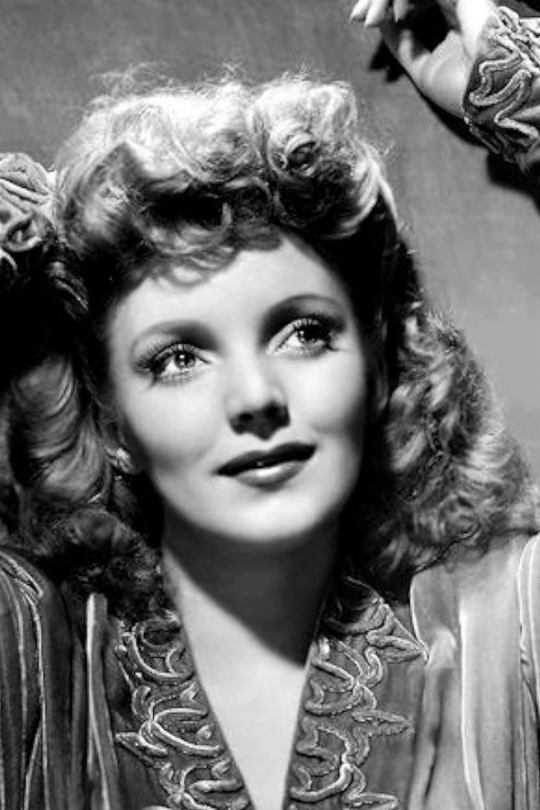

This beautiful velvet gown, likely designed by Robert Kalloch for Hedy Lamar’s Lucienne Talbot in the 1942 film Crossroads went on to be used in at least two promotional photo shoots for MGM sometime later in the 40s – one with Ruth Brady wearing the piece, and another with Marilyn Maxwell.
248 notes
·
View notes
Text
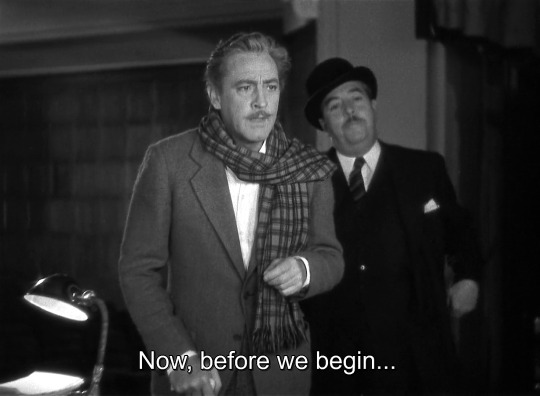

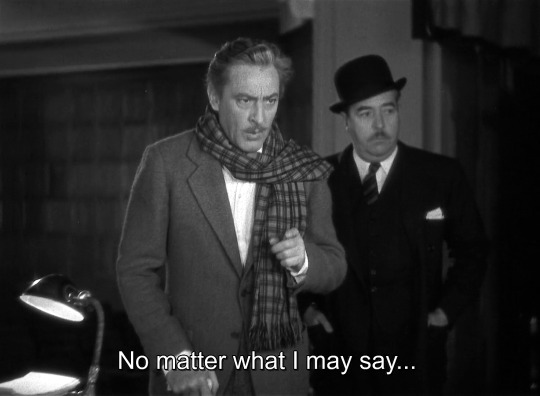
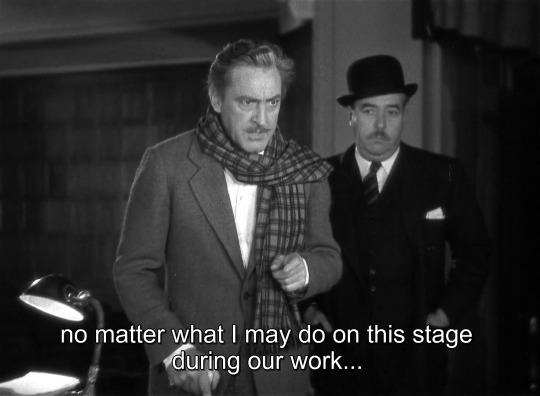
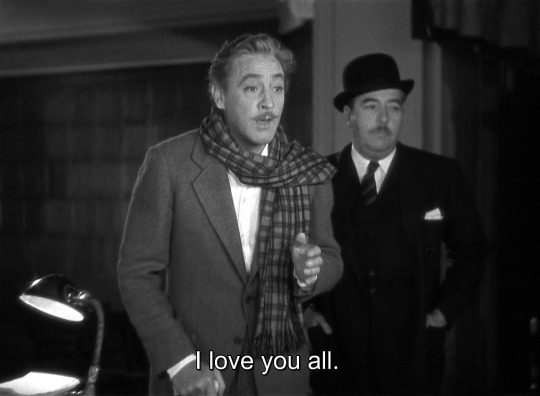
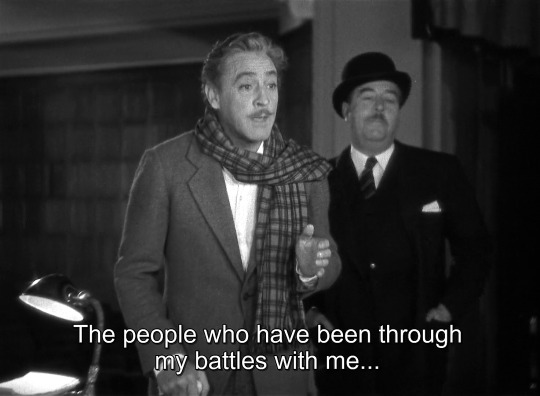

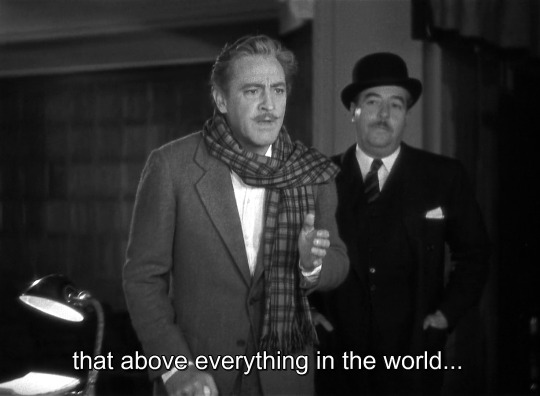


Twentieth Century (Howard Hawks, 1934).
#twentieth century#Twentieth Century (1934)#howard hawks#john barrymore#ben hecht#charles macarthur#joseph h. august#gene havlick#robert kalloch#preston sturges
42 notes
·
View notes
Text
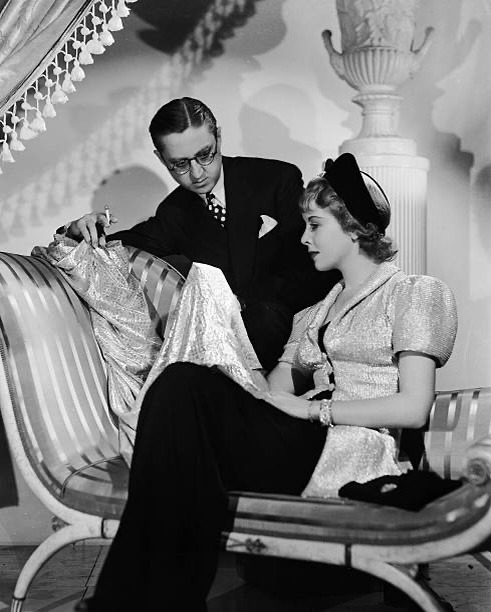
Ida Lupino looking at material samples with Columbia costume designer Robert Kalloch, ca. 1935
18 notes
·
View notes
Photo
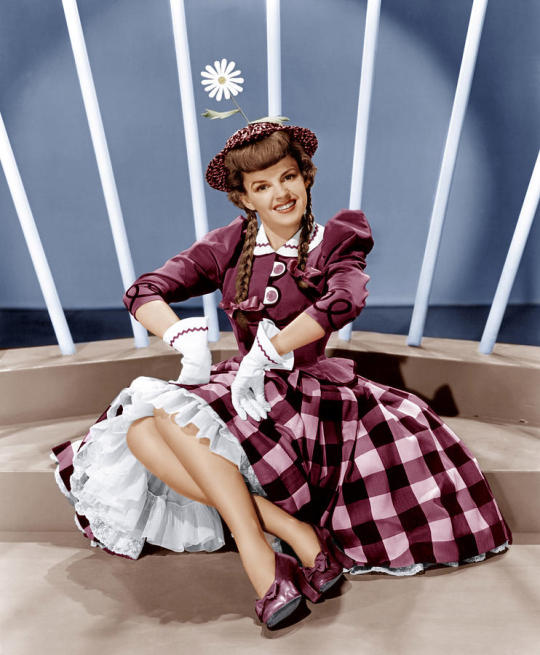
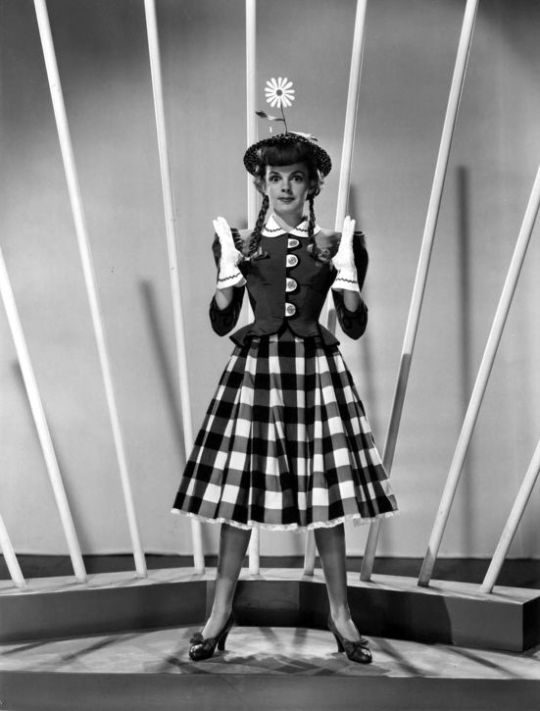



Jo Hayden (Judy Garland) Checkered skirt farm girl outfit.. For Me And My Gal (1942).. Costume by (Robert Kalloch)
30 notes
·
View notes
Text

Kathleen Kalloch Millay Young, Witch
[1896-1943]
#kathleen millay#sister of Edna St. Vincent Millay#witch#poetry#literature#words#academia#dark academia#quote#edna st. vincent millay#lit#books#books and libraries#reading#quotes#quote of the day#bookworm#book quotes#prose#booklr#bibliophile#excerpt#p
4K notes
·
View notes
Photo
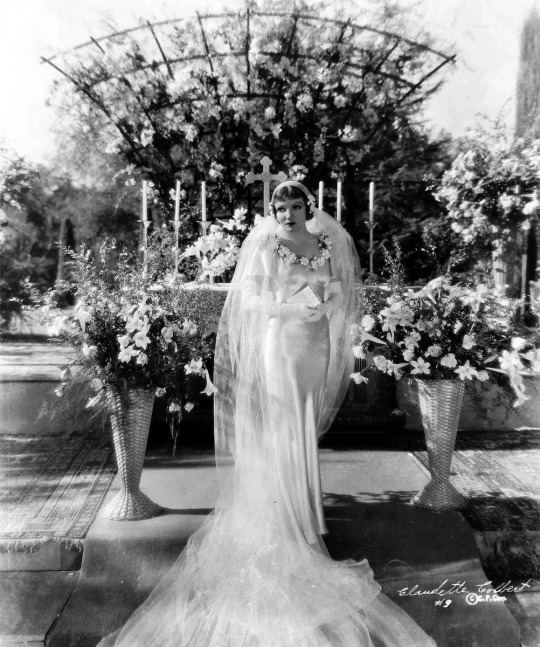
Claudette Colbert wearing a ravishing satin wedding gown designed by Robert Kalloch 𝑰𝒕 𝑯𝒂𝒑𝒑𝒆𝒏𝒆𝒅 𝒐𝒏𝒆 𝑵𝒊𝒈𝒉𝒕 (1934).
71 notes
·
View notes
Text
"RANDOM HARVEST" (1942) Review

"RANDOM HARVEST" (1942) Review
Between 1936 and 1942, author James Hilton enjoyed a prolific period of successful collaborations with the Hollywood studios. Some of those collaborations included writing screenplays for a handful of movies. However, three of those collaborations featured the screen adaptions of a handful of his best-selling novels. One of tho latter proved to be his 1941 novel, "Random Harvest".
Like some of Hilton's previous novels, "Random Harvest" proved to a very popular piece of work that became a major best-selling hit. Metro-Goldwyn-Mayer (MGM) purchased the film rights to novel and set an adaptation of it in motion. Mervyn LeRoy served as the movie's director and both Ronald Colman and Greer Garson were cast in the leads.
Unlike Hilton's novel, screenwriters Arthur Wimperis, George Froeschel and Claudine West abandoned the flashback narrative device for "RANDOM HARVEST". Because the novel had kept the duel identities of "Paula Ridgeway"/Margaret Hanson a secret until the very end, the screenwriters had decided to take a different approach, realizing it would have been difficult to maintain such a secret in this particular film, especially since the characters' faces - especially the leading lady's - must be seen. So . . . instead of treating the November 1918 sequence as a flashback, the screenwriters began the movie at that very moment with a British Army officer named "John Smith" confined to an asylum as an unidentified inmate.
On the day the war ends, the asylum's gatekeepers abandon their posts to join the celebration in the nearby Midlands town of Melbridge, and Smith follows him into town. There, he meets a music hall named Paula Ridgeway (stage name). Following a violent encounter with the leader of Paula's traveling theatrical group, she leads Smith away from Melbridge and they end up at a small Devon village. There, the couple fall in love, get married and conceive a son. Two years after they first met, Smith heads to Liverpool for a job interview at a newspaper. After a taxi hits him, while he was crossing the street, Smith regains his memories of his true self - Charles Rainier, the son of a wealthy Midlands businessman. Charles' return occurred on the day of his father's death and within a few years, assume control of the family's business. Unfortunately, Charles has lost his memories of his three years as "John Smith", including his relationship with Paula. The latter eventually discovers his whereabouts after a few years. When Paula - or Margaret Hanson - realizes that he does not remember her, she becomes his executive assistant in the hopes that her presence will jog his memories of those lost three years.
"RANDOM HARVEST" is not a perfect movie. What movie is? However, I can only think of one or two aspects about it that failed to impressed. It is quite clear that most of "RANDOM HARVEST" had been filmed inside a soundstage or on the MGM backlot. I have no general issues with this. In fact, I really admired Cedric Gibbons' art directions and Edwin B. Willis' set designs for the Melbridge street scenes. But there is one particular sequence - "Smith" and Paula's time in Devon - that looked particularly fake to me. I just did not find the Devon countryside featured in this movie convincing. But I really had a problem with the film's costume designs and hairstyles. "RANDOM HARVEST" was set during the years between 1918 and 1935. The movie had been shot and released in 1942. Robert Kalloch's costume designs did not reflect the movie's time period, as shown in the images below:



There was nothing about the dresses, suits, gowns, shoes and even the hairstyles that seemed to convey 1918-1919, the 1920s, or the early-to-mid 1930s.
But aside from these quibbles, I must be honest. I really enjoyed "RANDOM HARVEST". I have always enjoyed "RANDOM HARVEST". Between Mervyn LeRoy's direction and the screenplay written by Claudine West, George Froeschel and Arthur Wimperis; MGM released a movie that I believe proved to be one of the best romantic films I have ever seen. But the film's romance was enhanced by World War I's consequences upon Charles Ranier/John Smith's life and memories. "RANDOM HARVEST" not only struck me as a romantic film, but also a melancholic and sometimes, heartbreaking movie. Also, for a movie with a running time of 125 minutes, "RANDOM HARVEST" managed to maintain a steady pace, thanks to Mervyn LeRoy's direction. I found this mind boggling, considering I have found the pacing of many old movies from the 1930s and 1940s to be rather slow . . . almost to the point of dragging the movies to a stop. Thankfully, "RANDOM HARVEST" managed to convey a poignant and melancholy romance without putting me to sleep.
Certain aspects in the film's narrative managed rise "RANDOM HARVEST" above the usual tearjerker. The emotional impact of World War I upon Charles resulted in the creation of the melancholic and sad man struggling to deal with his amnesic state during the film's first half hour or so. Another scene featured Kitty Chilcet's - the stepdaughter of Charles' sister and his fiancee - discovery that he was not in love her. It proved to be one of the film's most haunting and emotionally devasting moments. One fabulous scene featured the revelation of Charles' secretary Margaret Hanson as Paula Ridgeway, the music hall entertainer he had married not long after the war. This revelation had led to a heartbreaking conversation between Margaret and Charles' former analyst and head of the Melridge asylum, Dr. Jonathan Benet, in which he advised her not to force her true identity upon Charles for the sake of his mental health. What made the film's second half even more poignant was Margaret's struggles to remain silent about hers and Charles' past, while stuck in what seemed like an arranged marriage between businessman and secretary.
"RANDOM HARVEST" managed to earn seven Academy Award nominations. Two of them were in the acting category - Best Actor for Ronald Colman and Best Supporting Actress for Susan Peters. For me, the two acting nominations served as a hint of the film's level of acting skills from the cast. There was not a performance that did not trouble me. The movie featured solid performances from Bramwell Fletcher, Rhys Williams, Melville Cooper, Jill Esmond, Alan Rapier, Ivan F. Simpson, Margaret Whycherly and Arthur Margetson. Una O'Connor and Reginald Owen both provided brief, yet entertaining performances as Melbridge citizens that Charles/"Smithy" had encountered on the night he had left the asylum. Henry Travers gave a poignant performance as doctor that the pair had befriended during their stay in Devon. Dutch actor Philip Dorn gave an intelligent, yet surprisingly emotional performance as Dr. Jonathan Benet, the gentle head doctor of the Melbridge asylum, who fell in love with Margaret/Paula years later.
Susan Peters reached the peak of her career in her portrayal of Kitty Chilcet, the step-daughter of Charles' sister. She gave an intelligent, yet lively performance as the charming, yet patient schoolgirl who managed to win Charles' heart. But in one scene in which Kitty realizes that Charles had memories of another love that would lead him to regard her as a stranger, Peters elevated her game and gave a subtle, yet skillful performance that led to an Oscar nomination for her. Of the three main leads, Greer Garson did not receive an acting nomination for her performance in "RANDOM HEART". Which seemed a pity to me, because I believe she really knocked it out of the ballpark as Margaret Hanson/"Paula Ridgeway", the music hall entertainer-turned-secretary who managed to win over Charles with her quiet wit, charm and warmth. Her rendition of the music hall song, "She's Ma Daisy", is something to behold. I believe Garson really shined in the film's second half, as her character struggled to nudge Charles into regaining his memories as "Smithy" and at the same time, keep her emotions and other identity in check during her "marriage of convenience" to him. In the end, Garson ended up being nominated for her performance in "MRS. MINIVER". She won in the end, but I cannot help wishing she had been nominated for her performance in "RANDOM HARVEST". For years, I have always pinpointed Ronald Colman as an actor known for his charm, dash and some pretty good acting skills. But in recent years, I have realized that I had underestimated just how skillful an actor he truly was. I thought he had given a phenomenon performance as a World War I amnesiac, who discovers he is a scion of a wealthy family. In scenes that featured "Smithy"'s confusion during the film's first thirty minutes, his confusion over his growing emotional dependence on Margaret and especially that one moment in which he regarded Kitty as a stranger, when his memories as Smithy returned briefly made me realize what a superb actor Colman truly was. It seemed a pity that he did not win the Best Actor award for that year.
It seems a miracle to me that Hollywood or anyone else has never considered making another serious adaptation of James Hilton's 1941 novel. Granted, that filmmaker or television producer would probably have great difficulty overcoming the ghost of the 1942 adaptation. I might as well say it . . . "RANDOM HARVEST" is excellent adaptation of Hilton's novel. Mervyn LeRoy did an excellent job in maintaining a strong pacing for such a melancholic story. Screenwriters Claudine West, George Froeschel and Arthur Wimperis had made some changes that proved to be very effective for the film's narrative. But without the excellent cast led by superb performances from Ronald Colman and Greer Garson, who knows if "RANDOM HARVEST" would have become the classic it now is.


#period drama#period dramas#old hollywood#james hilton#random harvest#random harvest 1942#mervyn leroy#ronald colman#greer garson#susan peters#bramwell fletcher#rhys williams#alan napier#melville cooper#mgm#jill esmond#ivan f. simpson#una o'connor#reginald owen#philip dorn#margaret whycherly#arthur margetson#world war i#amnesia#interwar period
0 notes
Text
‘Notes on the World Around Us’ Opens Next Thursday at SJ Art Consulting Gallery
To submit Business Bulletin announcements, click on image.
A two-person exhibition, featuring original drawings by Ingrid Ludt and Sand T Kalloch, opens next Thursday in downtown Haverhill.
SJ Art Consulting presents “Notes on the World Around Us,” with an opening reception Thursday, March 14, from 5-8 p.m., at its gallery, 43 Washington St., Haverhill. The two series of drawings by Ludt and…

View On WordPress
0 notes
Text
This nonprofit is proving that creating good jobs is good business
New Post has been published on https://thedigitalinsider.com/this-nonprofit-is-proving-that-creating-good-jobs-is-good-business/
This nonprofit is proving that creating good jobs is good business


There’s a widely held belief that in order for places like retail stores, restaurants, and fulfillment centers to be successful, they need to squeeze everything they can out of frontline workers and offer as little in return as possible. This extends beyond offering low pay to include irregular schedules, minimal benefits, no real career paths, and a general lack of regard for worker well-being among decision-makers.
It’s no wonder, then, that such industries struggle with constant worker turnover, low productivity, and poor worker morale.
The Good Jobs Institute is offering companies another path to success based on a framework developed by Zeynep Ton, a professor of the practice at the MIT Sloan School of Management. The system combines strategic investment in employees with operational decisions that increase employee productivity, contribution, and motivation.
By implementing what Ton calls the “good jobs strategy,” companies have seen large drops in employee turnover and higher worker productivity, and jumps in customer satisfaction and sales.
“Our mission is to help companies thrive by creating good jobs, but another part is to change the conversation about what it means to have a successful company and what is the role of employees in organizations,” Ton says.
The Walmart-owned Sam’s Club, for instance, reported higher revenue, higher productivity, and a plunge in employee turnover after adopting the good jobs strategy. More than the business metrics, though, executives say it has been humbling to be part of a movement that meaningfully improves people’s lives.
Tim Simmons, the chief product officer at Sam’s Club, got a personal look at the impact of the strategy when he was touring a club in 2019 with a regional manager who was announcing the first pay increases. People began to cry. Some later reported they no longer had to work a second job. Many said it changed their lives.
“I remind my students of what [influential business author] Clay Christensen taught me: Management is the most noble profession when it’s practiced right,” Ton says. “Our students, future leaders, not only have the opportunity to create great businesses and do well for themselves and their families, but also to change the lives of so many people for the better.”
Answering the call
In Ton’s first book, “The Good Jobs Strategy: How the Smartest Companies Invest in Employees to Lower Costs and Boost Profits,” published in 2014, she lays out what she calls the “vicious cycle,” in which companies seek to cut costs by minimizing employee wages and benefits. The approach leads to poor working conditions, low morale, high turnover, and reduced productivity.
The book struck a chord with many business leaders, who contacted Ton asking for help. At first, Ton declined. She had a full-time job at MIT and four kids. But one night she was having dinner with Roger Martin, the former dean of Rotman Business School, and she mentioned that she’d declined to help a legendary CEO earlier in the day.
“He said, ‘That’s the worst thing you could’ve said, because if you want to change things, you have to figure out how to help,’” Ton recalls. “I said, ‘I’ll do it if you help me.’”
The two founded the Good Jobs Institute in 2017 along with Sarah Kalloch MBA ’16, who had taken classes with Ton and has served as the institute’s executive director ever since. The team decided to organize the Good Jobs Institute as a nonprofit to make it easier to ask others in the field for help and to stay focused on the mission.
“It just seemed like the right thing to do,” says Ton, who receives no income from her work with the institute. “The GJI has become a lab in which we learned how to apply my academic research to real life and improve the lives of low-wage workers in a way that helps companies.”
Eventually the team settled on hosting workshops and road-mapping sessions to help companies. Today the Good Jobs Institute’s process for working with companies depends on their size and type, but it typically starts with a two-day kickoff workshop with company executives and frontline managers.
The workshops begin with a discussion of the vicious cycle to help leaders articulate how the status quo is hurting their customers and competitive position. Later, the workshop uses the Good Jobs framework — which is made up of four operational pillars: focus and simplify, standardize and empower, cross-train, and operate with slack — combined with investment in people to help leaders imagine how an alternative system might drive better work and customer value. Company officials then begin discussing why they need the strategy for success and identify specific changes they’ll need to make in their organizations to adopt it. The workshop ends by reviewing case studies of other organizations that have successfully implemented the strategy.
“At the end of the workshop, there’s some urgency among the leaders to change, and some alignment around the types of changes needed to get there,” Ton says. “And then we work with companies to help them articulate why they need to improve frontline work, who needs to be involved, and what changes to make first.”
Ton says a lot of the institute’s work revolves around emphasizing to companies that the strategy is a system and that individual changes, like raising pay, will not work in isolation.
“The whole idea of the good jobs strategy is you invest in people, and you make choices that make their work more productive and enable higher contributions,” Ton explains. “Without the work design changes, investment in people is unlikely to pay off.”
Making good jobs mainstream
The Good Jobs Institute has worked with dozens of companies, including owners of convenience stores, retailers, call centers, restaurants, and pest control businesses. Companies that adopt the system report big drops in employee turnover — between 25 and 52 percent —along with significant increases in productivity and sales.
Ton doesn’t think it should be a surprise that empowering workers who are otherwise struggling to make ends meet pays off. In fact, she believes most people underestimate the impact a small pay raise can have on a low-wage worker’s physical and mental health.
Ton’s conviction has grown as she’s heard from the companies she’s worked with. One former student, Michael Ross MBA ’20, SM ’20, has come to Ton’s class to discuss his experience implementing the good jobs strategy at the pest control company he leads.
“He talked about how he was in the Marines before and had a deep sense of purpose. Then he went to a private equity firm and missed that purpose and missed making a difference, and now spreading good jobs has become his purpose,” Ton says.
Ross’s story is not unique. An employee at a restaurant that adopted the good jobs strategy told the owner it allowed her to buy back-to-school clothes from somewhere outside of Goodwill for her children for the first time.
“At a personal level, for leaders at many companies we’ve worked with, the change has been super meaningful,” Ton says. “One person, [Moe’s Original BBQ franchisee] Dewey Hasbrouck, said this has become his ‘Why?’”
Last year, Ton wrote a book on what she’s learned from working with companies, titled “The Case for Good Jobs,” and she says the Good Jobs Institute is currently working to create a more scalable model of its workshops so the approach can spread more quickly.
“We still have a huge chunk of people who don’t make enough money,” Ton says. “We still don’t have enough respect for the work that frontline employees do, from factories to retail stores to health care settings. That’s one of the reasons why people are fed up and looking for other opportunities. It’s what we’re trying to change.”
#approach#book#Business#Business and management#call Centers#career#CEO#change#Children#classes#Companies#decision-makers#Design#Economics#employee productivity#employees#equity#executives#Factories#Faculty#framework#Full#Future#GoodWill#Health#Health care#Hosting#how#how to#Industries
0 notes
Text

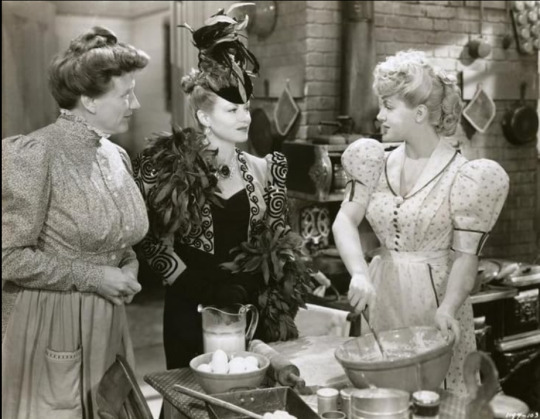
One Dress a Day Challenge
February: Coeli's Monochrome Picks
Honky Tonk / Claire Trevor as "Gold Dust" Nelson
Coeli's comment: "What a hat!"
I really like the bold spiral designs on the jacket sleeves. Not sure what's up with that spray of feathers on her shoulder, though.
The costume designer for this film was Robert Kalloch, who went by just "Kalloch" in the credits.
#honky tonk 1941#coeli's picks#claire trevor#one dress a day challenge#one dress a week challenge#movie costumes#period film#1941 movies#1941 films#1940s tries to do 1880s#kalloch#19th century costumes#black and white movies#black and white films#classic hollywood#old hollywood#robert kalloch#shouldamapads
6 notes
·
View notes
Text
Twentieth Century
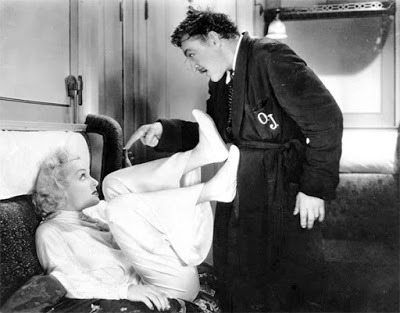
Carole Lombard was nothing but a clotheshorse until Howard Hawks got her to act on screen the way she did at parties. John Barrymore helped get a star-making performance out of her without sacrificing any of his own genius, and Robert Kalloch put her in the perfect glimmering lounging pajamas for the occasion. The result was TWENTIETH CENTURY (1934, on Criterion Channel through Tuesday), one of the precursors of the screwball comedy. Barrymore is Oscar Jaffe, a grandiloquent theatrical producer in the mold of David Belasco. He turns lingerie model Mildred Plotka (Lombard) into Lily Garland, the most glamorous star on Broadway and the love of his life, in a string of hits that end when she tires of his controlling ways. Years later, he’s broke, she’s a movie queen, and they’re both on the same train headed from Chicago to New York — a golden opportunity for Jaffe and the audience. One of the film’s fascinations is the way her role actually shows Lombard moving into her power as an actress. In her early scenes as an actress, Mildred is tentative and phony, but as Jaffe molds her she becomes as histrionic as he is. During their confrontations on the train, some of the best arguments ever put on film, they both act at each other without mercy. They’re supported by Walter Connelly and Roscoe Karns as Jaffe’s assistants, Etienne Giarardot as a religious maniac on the train, Dale Fuller as Lily’s long-suffering, deadpan maid and Charles Lane as Jaffe’s house director.
1 note
·
View note
Photo
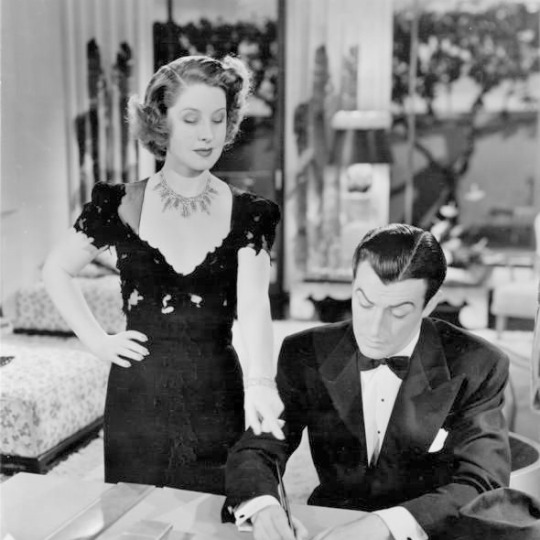
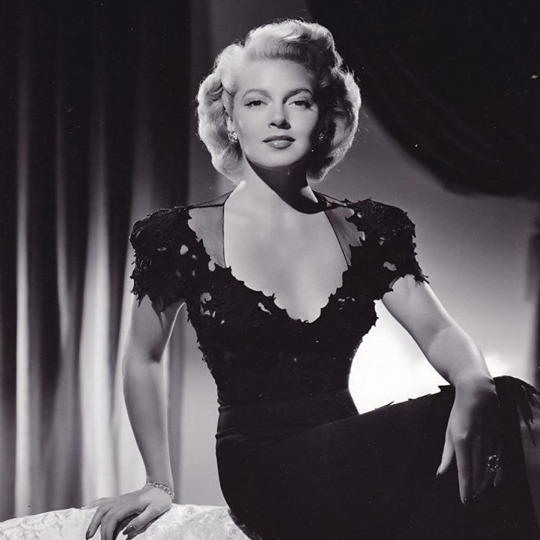
This fabulous black gown was designed by Robert Kalloch for Norma Shearer as Consuelo Croyden in the 1942 film Her Cardboard Lover. The dress was used later in 1943, where it was worn by Lana Turner in a publicity photo for Slightly Dangerous, though the dress does not appear in the film.
Costume Credit: Normashearer101, Vintage Film Costume Collector
E-mail Submissions: [email protected]
Follow: Website | Twitter | Facebook | Pinterest | Instagram
168 notes
·
View notes
Text

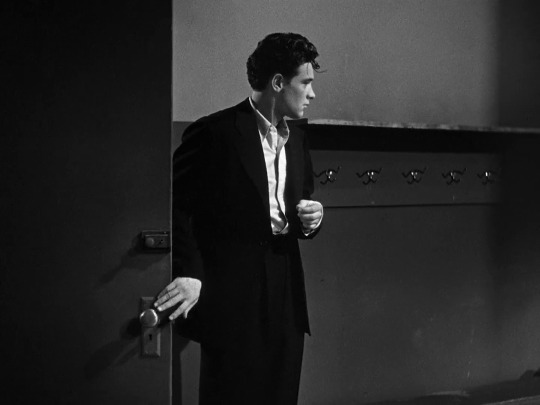
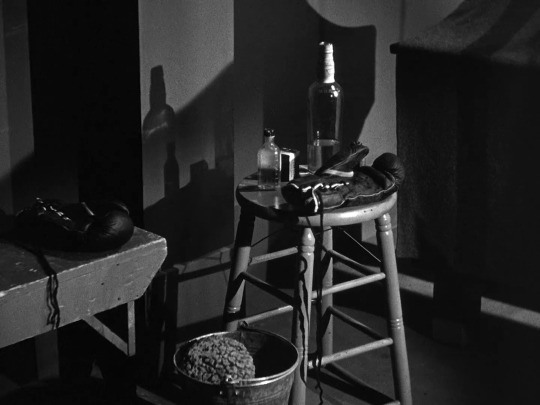
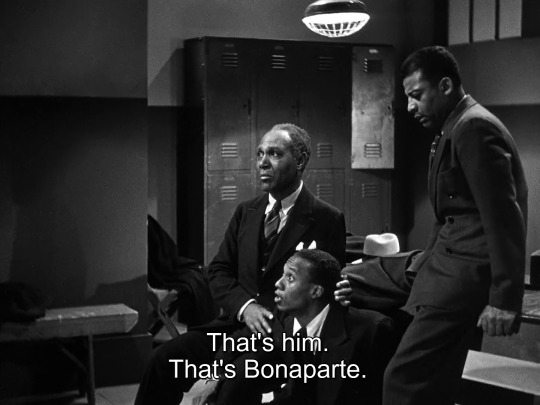

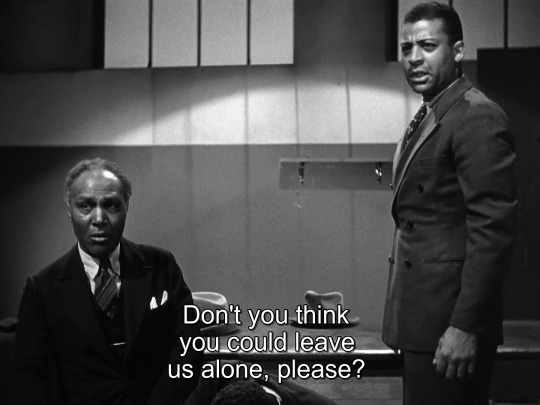
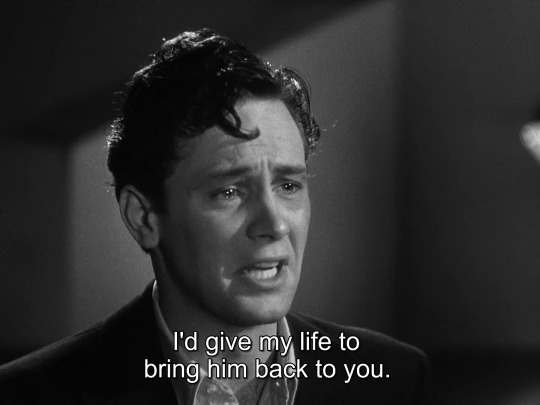


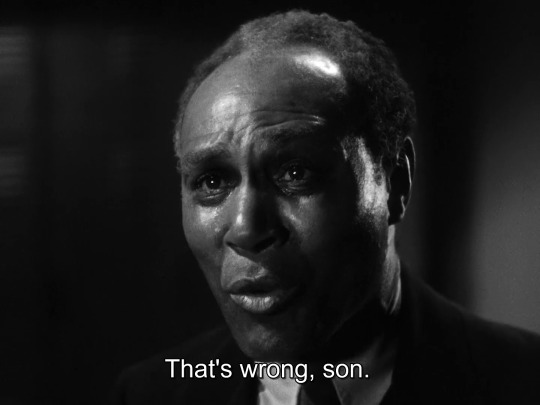
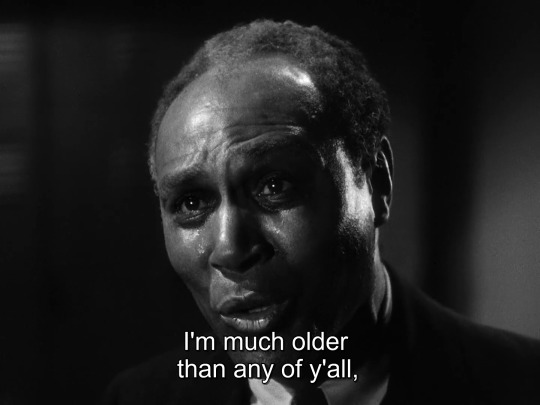
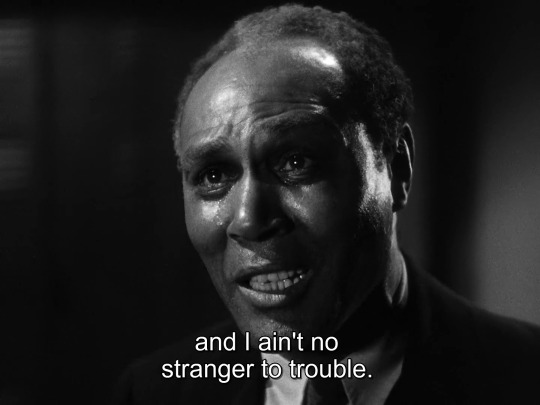
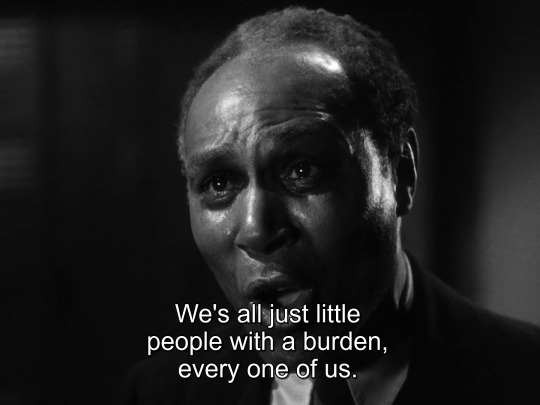

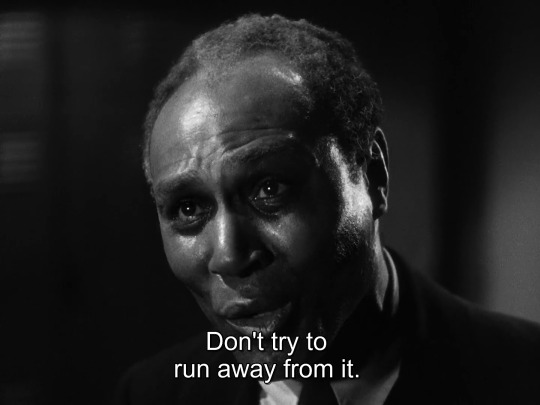

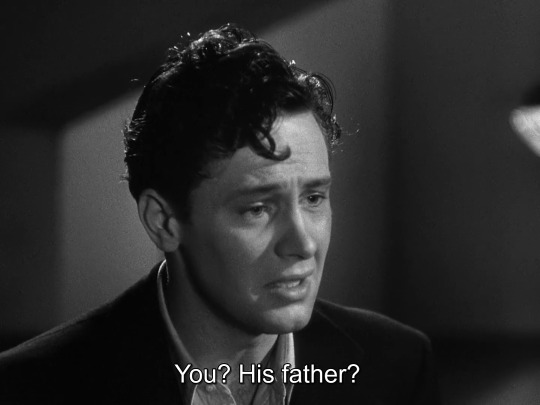
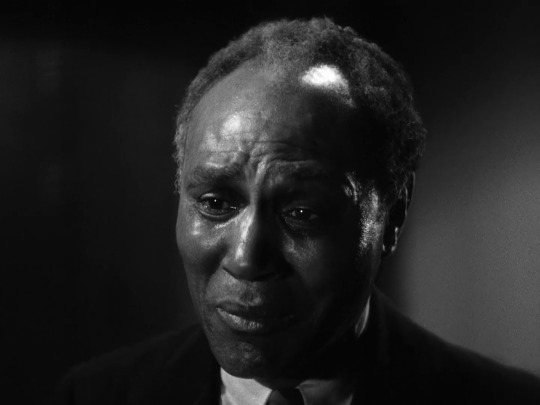
Golden Boy (Rouben Mamoulian, 1939).
#golden boy#golden boy (1939)#rouben mamoulian#william holden#Lewis Meltzer#Daniel Taradash#Sarah Y. Mason#Victor Heerman#Clifford Odets#Karl Freund#Nicholas Musuraca#Otto Meyer#Lionel Banks#Robert Kalloch
19 notes
·
View notes
Text
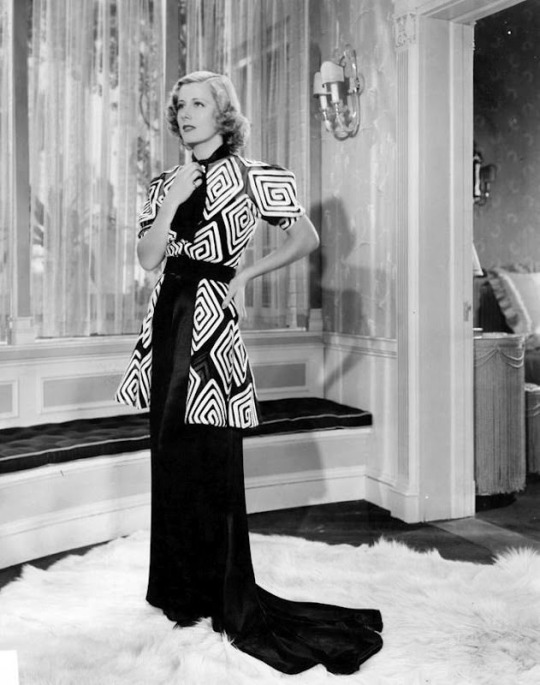
Irene Dunne as Lucy Warriner in Leo McCarey’s THE AWFUL TRUTH (1937). Costume by Robert Kalloch
67 notes
·
View notes